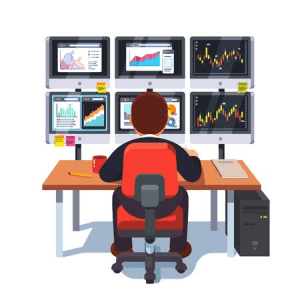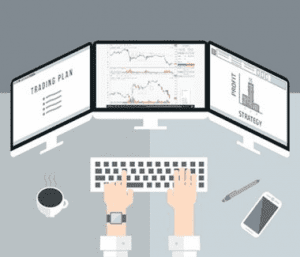
New traders tend to start their trading journey with a demo account. It makes sense — using a demo account is a convenient and practical way to learn the basics of trading. In fact, it is often recommended that traders’ transition to a real account only after they have realized consistent results using the trial trading feature.
Here’s where things get a bit tricky. Once traders have consistently made winning trades, they expect the same results will be easily replicated on their real account. Not only are these expectations unrealistic, but they will also set you up for failure.
Before making the switch from practice to real trading, it is imperative to understand what makes these accounts different from one another. Taking these points into consideration and planning ahead will better prepare you for the shift from trial trading into a real account.
Know the risks of trading
There is no real monetary risk when trading demo. Losing streaks on a demo account are not as devastating or discouraging because you have the comfort of knowing you can replenish your account with more funds whenever you wish to do so.
Trading on a live account is a completely different story. Since you are investing your hard-earned money, losses are going to hit much harder. This, in turn, can negatively impact your trading confidence and lead to irrational decisions. Accept that losses are a part of trading and plan for them accordingly.
Understand the psychological difference
The bottom line is that trading on a real account evokes a rollercoaster of emotions, especially when first transitioning from demo trading. You’re bound to feel a rush of adrenaline, excitement, and nervousness throughout your first couple of trades. Intensified feelings of frustration or anger may also make an appearance.
The key here is to try and keep your emotions under control. If a strategy you used on your demo account isn’t quite working the same way on your real account, don’t be afraid to cut your losses and adjust your plan. Stubbornly attempting to replicate your demo results may give way to poor habits like revenge trading.
Expect changing market conditions

Market conditions change in the blink of an eye. A number of new traders may not be equipped to handle volatility, while others may find it difficult to trade in a slow or sideways market.
Before taking the leap into real trading, make sure you have a plan for all types of market conditions. Rather than trading large positions, start off with smaller amounts. Only trade what you feel comfortable losing. You can increase your positions after achieving consistent gains and having more experience under your belt.
Now that you know the difference between demo and live trading, are you ready to make the switch?

